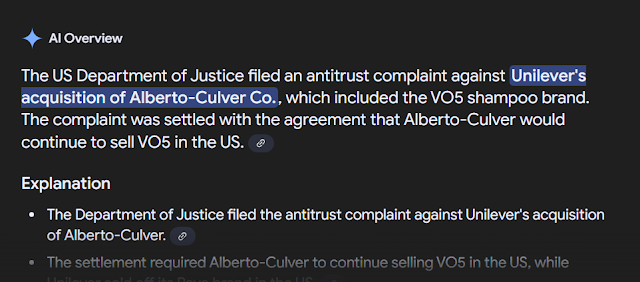Should I buy "Baldur's Gate II?"
"It should be punishment for criminals," says one reviewer.
Unless you're super-into D&D, no.
Well.
this (bg3) record is getting scratchy from overplaying.
I've got enough $$ for an unpopular game, but the popular ones are still expensive despite years of dust and neglect.
 |
The camera clicked just as Shadowheart frowned to make a point.
*My* point was, give her decent hair and fix her bug-green eyes,
She almost looks decent (OK this picture was a bad example, but yeah) |
Unfortunately I have no apparent control over the washed-out color you might be seeing. She looks very decent, But you'll just have to believe that, because I cannot duplicate it here.
Most popular games want you to kill something, for a better weapon (to kill something) to finally meet the unkillable something.
Ah, IDK. I need to remind myself, unpopular games are my required domain, but some are boring as hell.
What constitutes a good game anyway?
you don't have to ride a horse, nor drive a car.
An available weapon (e.g., "45 magnum") Kills the biggest beast.
You don't die (much)
I think I own that game already, I'm a mailman in a postapocalyptic world, and the unkillable evil guy can eventually be killed, if I cheat tons.
("Death Stranding")
An unassuming rogue-type person who has a soft heart.
Maybe a political thriller
How much nukes could a president bomb if a president could nuke the world?
(Doesn't exactly roll trippingly off the tongue)
If a president bombed Moscow would he bomb New York to make up for it?
How many bombs could you bomb,
exactly, and manage to avoid nuclear winter?
uhhhh, "Rule the world" in six easy steps without triggering the apocalypse.
 |
You pay a shitload for a videocard and this is what you can expect?
$40 |
IDK.
Games with beautiful sunsets, endless walking, an occasional closeup, and music.
Gotta have music.
But I've done that genre to death.
"Legend of zelda" best for exploration
but not on PC
(without an emulator)
(and a pirate copy)
Next!
(This is like night-school for old people..)
Um, "Best PC exploration open world RPG"
I really hated Deus-ex, I think.
The rest are ok.
"divinity yada this&that" is it another card game?? IDK
 |
Next!
(I think I'd hate it anyway) |
Unfortunately I've done this type of entry before, listened to your recommendations before, Blocked them from my memory before:
The pictures (above) follow the train of thought from a reddit thread about "
FLR" games.
Apparently the OP was looking for such a game, and sex games got a negative review point. There must be, somewhere, a distinction between
Female-protagonist and Kinky Female protagonist.
Bioshock-infinite was topical but you couldn't do a whole lot about the plot, except get yourself killed to save the world.
Kill the police
kill the gangs
kill the preacher
kill yourself
All dressed up in a timey-wimey world.
A loser and a drunk saves the world (kind of) but loses his pathetic life.
(Ahh, memories)
Why can't I find more games like that?
Fallout-something:
The world is toast, thanks to the righteous being taken away after they press the biggie button.
The normal people left, fight the undead, fight radiation, build some houses, and kill mean people.
I still haven't found the perfect game yet, can you tell?
Replaying games from the old steam toy-chest is less and less fun, IDK
Slow day, reading Google-software news:
 |
"Beta 4"?
Where have *I* been?
My phone is currently downloading 15-qpr2-beta *3*
Now, I know my life is insular, but geez... |
Beeesides...articles abound for the preview-2 of pixel android 16.OK, maaaaybe the "4" is a typo, IDK.
I just wish like crazy they tweaked my fingerprint reader, but I always wish that,
with every beta update, and
get all disappointed after trying it out,
giving up and permanently unlocking the phone.
"Maybe THis time"
 |
| Maybe NOT this time |
(Parenthetically, Dexcom warns me against installing updates.
I um, ignore them, but since I no longer have a working receiver, I should prolly listen)
This next bit is an edit.
After the above happened, the phone downloaded android
16, but I don't know if they call it that yet, except on the download notification page.
The phone just calls it "Baklava" and lists a ton of scary numbers ("Scary" if hackers know what they mean)
 |
| Click to read |
The part I circled in red, "Google-play", is a future date.
It's still January.
The baseband, Kernel and Build number look private, but I hope they are not.
The point, if there is one, is that everything looks exactly the same!
The fingerprint reader works again, barely, but the user interface looks exactly the same.
I was going to go look for an android-discussion page to see what the picayune, the exacting, found wanting or approved of.
"I before E except after C" or maybe it runs slower or faster.
As a beta tester, I suppose that I should know.
I got interested (for five minutes) in the sensors.
They have a barometer.
Unfortunately, the apps suck the personal-info dry, locations and such, and I didn't really want to expose the phone to even more scrutiny than it already has.
Apps galore want to know where I am and my contacts.
Referring to my reddit screenshot, I cannot seem to find the exact version yet, 14 or 15 or 16.
Everyone *says* it's 16, but one guy says it's still 15.
3AM insomniacs wanna know.
One of the many "about" pages claims "15". IDK. I can't find it right now.
Also if apps like "Google play services" can be safely downloaded from APK sites or if they should only be installed from the google store.
Ten zillion hacked phones can't be wrong (can they?)
And it's not like I'd find an ongoing hack-mission being talked about much.
My emails and contacts and call history are lily-white, nothing subversive, and yet,
I'd wonder what Trump has in mind for phone-owners he does not approve of.
It's like, (OK) those pirate movies (the really old ones) where the pirates were working for the Queen.
(O, nevermind)
"join the beta"
(join us, join us, join us)



























































